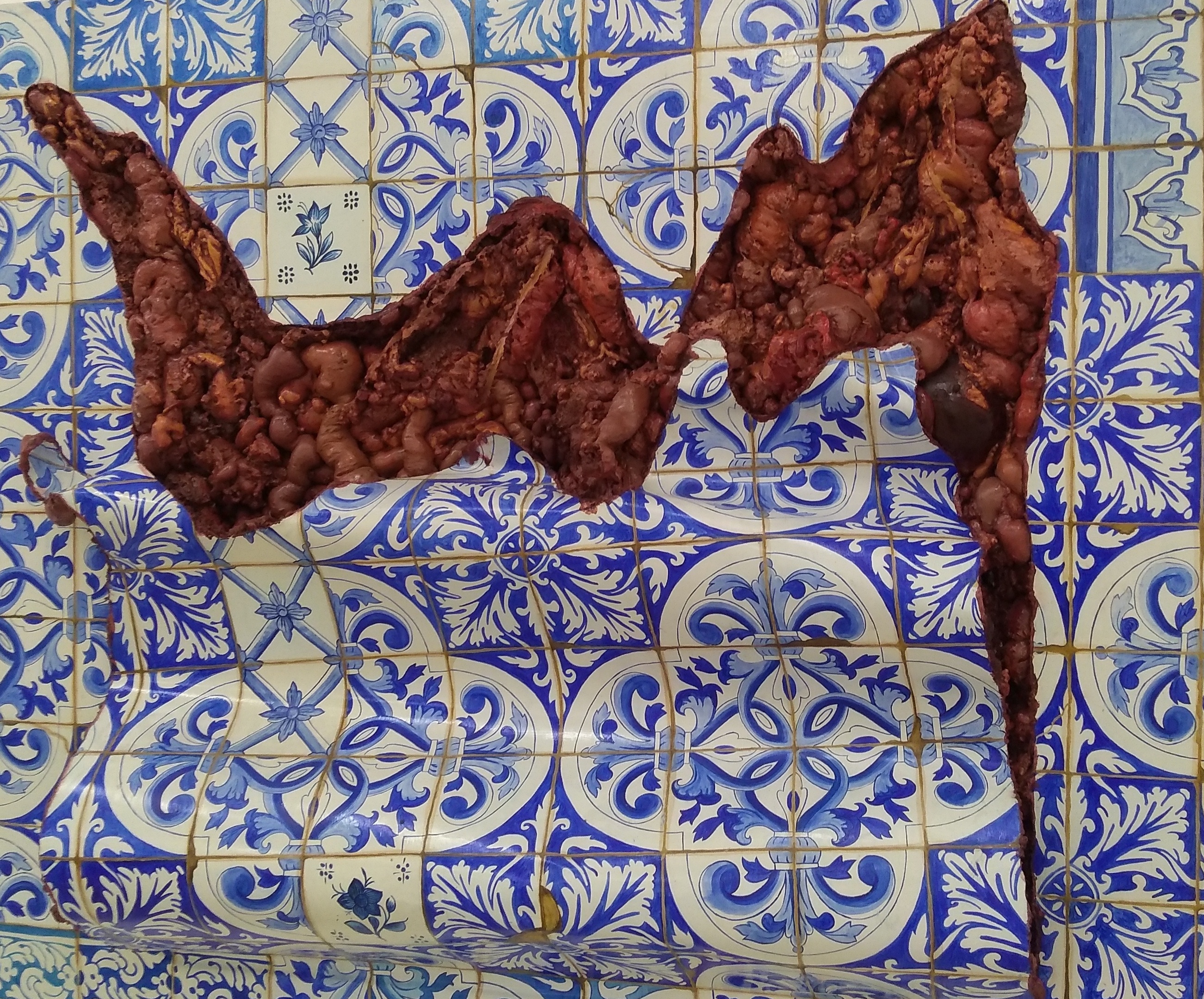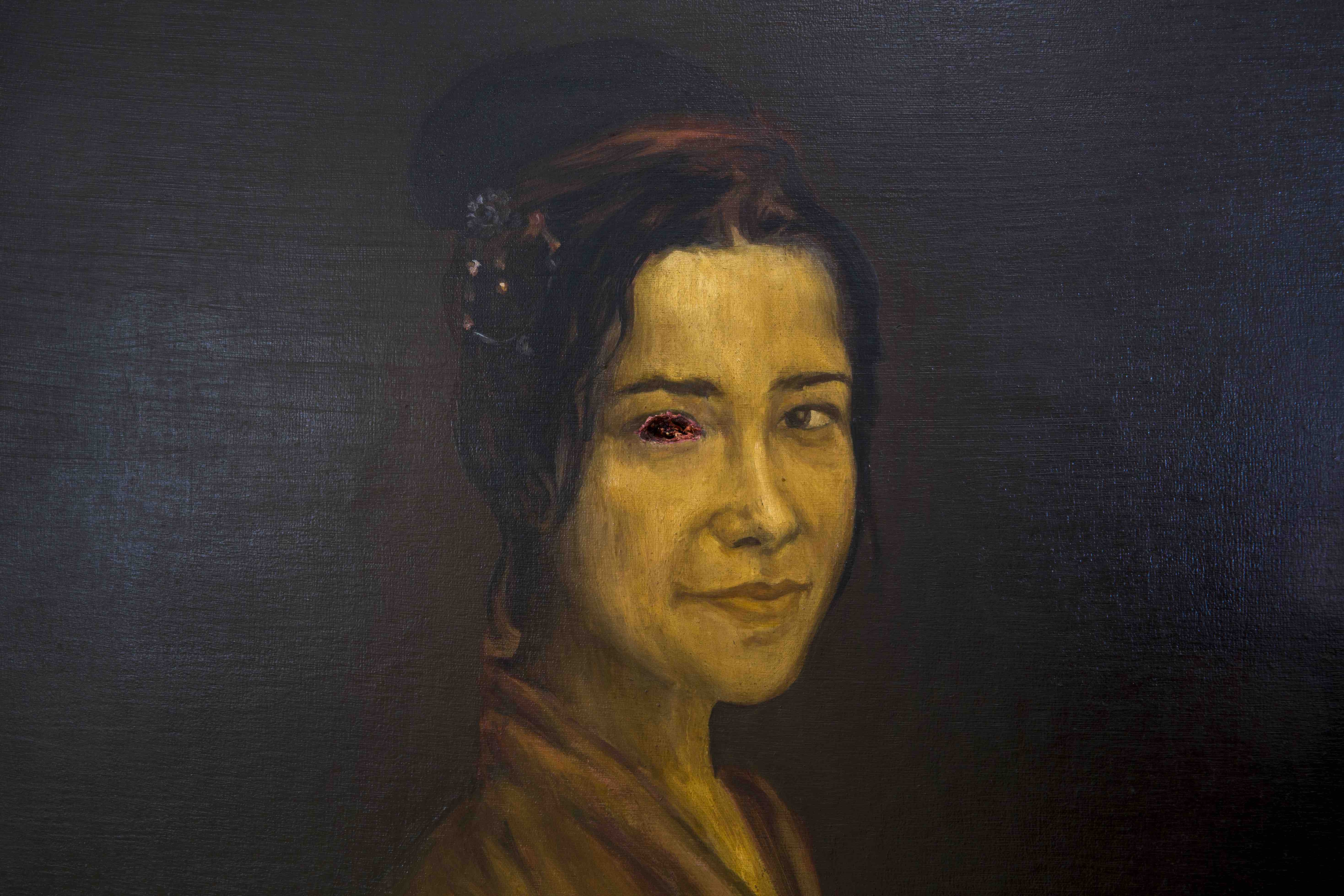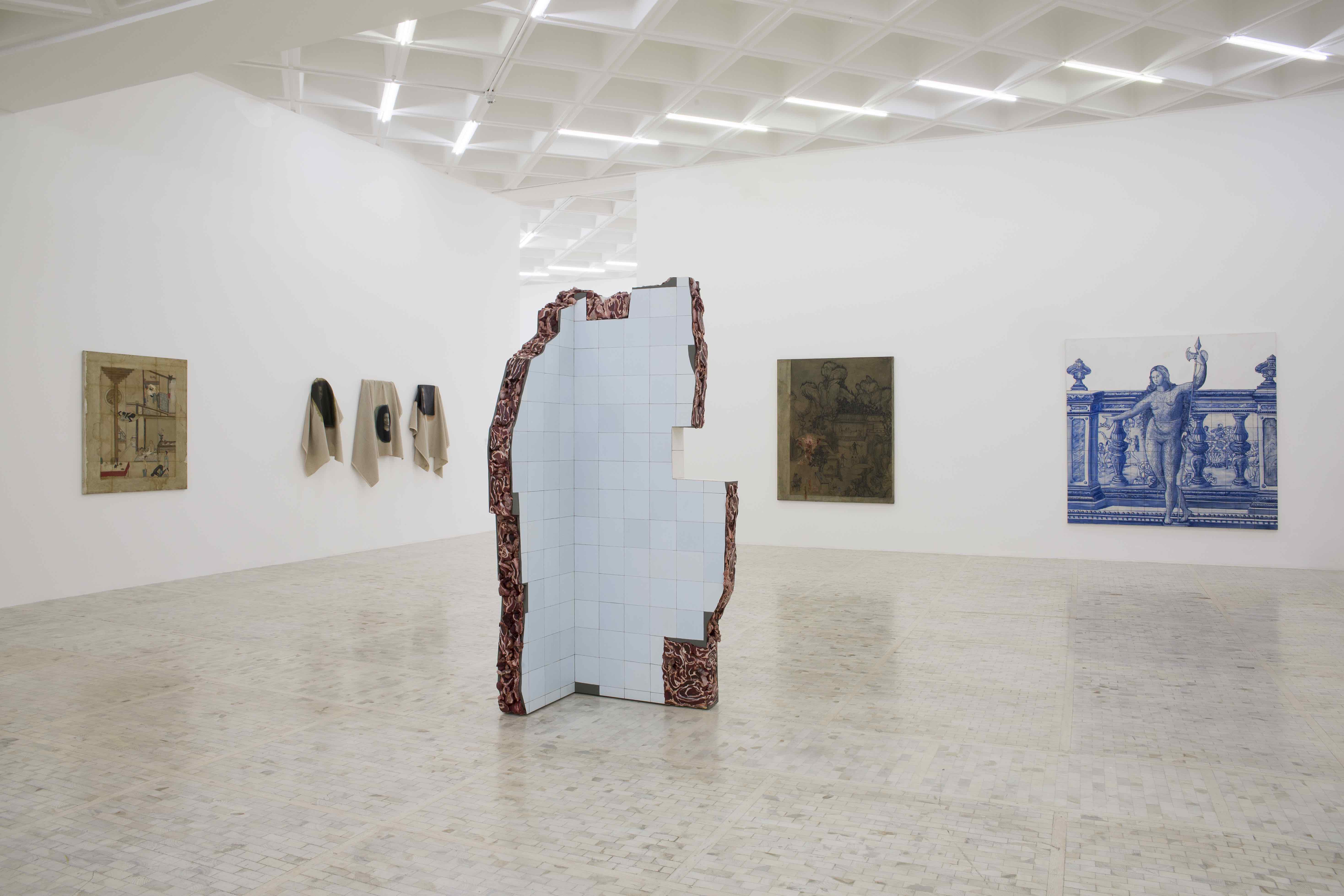
Review
To open the wounds of Latin America | Adriana Varejão. Otros cuerpos detrás (“Other bodies behind”)
by Ricardo Quiroga
At Museo Tamayo
Reading time
6 min
In the flesh: this is how colonialism has permeated our Latin American identity. Its presence is undeniable: just look at our art, at our architecture and its mosaics; at our skin colors and, with them, our racism. For three decades Adriana Varejão (Río de Janeiro, 1964) has worked with these problems, which we can observe in their artistic materialization in the exhibition Otros cuerpos detrás (“Other Bodies Behind”) at the Museo Tamayo Arte Contemporáneo until January 5.
The search for a claim to our identity has cost us so much! Behind us lies histories of oppressors and oppressed, governed according to the amount of melanin in one’s skin; this has cost blood and unquantifiable human loss. Thus argues the work of this Brazilian artist, and in the most visceral way.
With twenty of Varejão’s works exhibited in the Tamayo, we can distinguish four moments—crisscrossing but congruent—in her creative trajectory, each treating Latin American identity and its conflicts: first, her early figurativism, produced in the 1990s; second, her architectural ruins, mostly executed in the transition to the 21st century; third, the oil paintings of lacerated or cracked tiles, which have been a constant in her work; lastly, the series Polvo (“Octopus”), with which in the last three years Varejão has taken a step from the interpretative to the propositive. All of them share a technical foundation: oil paint.
The tryptic Testemunhas oculares X, Y e Z (“Eyewitnesses X, Y and Z,” 1997) exemplifies those first years of pictorial figurativism in which the artist rehearsed the problems of racial segregation, taking off from the caste-based Baroque painting carried out throughout much of the continent in the first decades of the conquest. In this piece appear three women of different races, each painted in oil on canvas: one with East Asian features, another of African origin, and another with Native American features. Each one has a severed eye that has been brought to three-dimensionality: there are three small sculptures of their eyeballs at the foot of each painting, with miniature images painted on their ocular surfaces. The artist has based her practice on optography, a scientific theory that proliferated at the end of the 19th century; this approach brings with it figuration: the human retina retains the last image that the person registers the instant before their death.

The oil on canvas Figura de convite I (“Invitation Figure I,” 1997) looks dazzling from a distance: a half-naked woman of indigo contours, whose body Varejão has decorated with floral motifs, is the center of this large-format work. The woman extends her right hand, as though she were inviting the viewer to see things from her perspective. This piece takes up the 18th-century Baroque Portuguese tradition of decorating tiles with human figures inside the palaces of the Portuguese and Brazilian nobility. These illustrations were usually used to welcome visitors and, with pictorial gestures like that of the woman in this work, would occasionally indicate the way towards the main areas of the houses.
As the visitor gets closer to the work, some disturbing details begin to stand out. Behind the woman, peeking out between the Baroque balusters, are groups of adults and children putting human limbs on a fire and devouring them. These are evocations of the illustrations made by the Flemish engraver Theodor de Bry (working without much knowledge of his topic, and in an exoticizing way) when he depicted the anthropophagic rituals that were practiced in the New World, and which De Bry imagined based on the stories of travelers and missionaries who had returned to Europe.
Just in front of that “Invitation Figure” resides a piece from the series Ruinas arquitectónicas (“Architectural Ruins”), which themselves inhabit the entire exhibition. These are scraps surviving from constructions that could have once been parts of the graceful buildings of the Portuguese Baroque or of Brazilian modernism. Among these ruins of walls or corners of houses—where among the tiles there should have been concrete—there are human entrails, magmas of mutilated meat, remnants of something that seems to have been alive and that is what has apparently held together the constructions evoked in the exhibition. The museum placard explains that these amount to the absolute literalization of how behind both Baroque art and post-colonial Latin American culture there lie lacerated bodies.

As if they were continuations of the “Architectural Ruins,” magnificent oils decorate the room: reproductions of Baroque tiles that the artist has documented in churches and historic buildings in Brazil and Portugal. These oil reproductions have perfectly executed decorative patterns, showing off the work’s thoroughness and delicateness. After finishing them, however, the artist has violently torn them apart. From these ruptures she has made emanate a kind of organic, bloody pollution, overwhelming the splendor of the decorative mosaic.
With these wounds repeatedly inflicted on pictorial work and ruins over the years, the Brazilian artist has kept her focus on the physical and ideological violence of colonialism in Latin America. These works represent the wounded human bodies lying behind the continent’s artistic and architectural splendor.
In recent years, Varejão has been particularly interested in the conditioning of skin pigment. Basing her work on a survey conducted by the Brazilian Institute of Geography and Statistics in 1976, in which Brazilians gave 136 different descriptions of ethnic variations in their country, the artist has taken 33 of these variations and reproduced them, according to the skin types described, in 33 tubes of different shades of oil paint. She has titled them to fit with the survey descriptions: “Morenão” (brown) “Pouco clara” (light brown), “Branquinha” (white), “Café com leite” (coffee with milk), to mention a handful.
Adriana Varejão defines herself as Latin American. “There is no separate territory between Brazil and Latin American,” she explained during a presentation of the exhibition in the Museo Tamayo. She insists that we are the product of the very same historical process of subordination, miscegenation, and uprising. Her work is part of that same discourse about identity: the same walls and decorative arts on the streets, and the same skin tones that inhabit them.
Published on October 31 2019